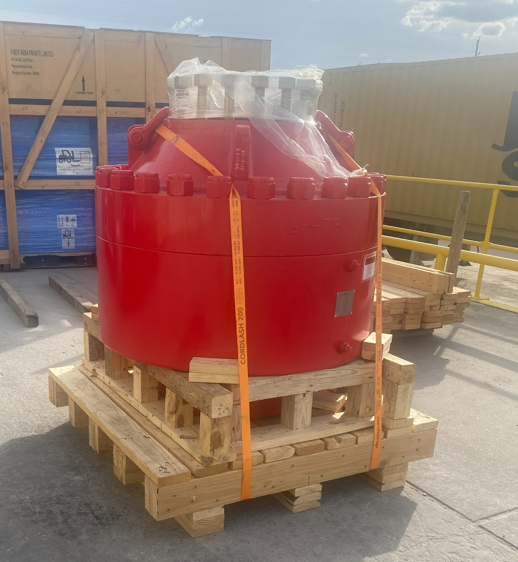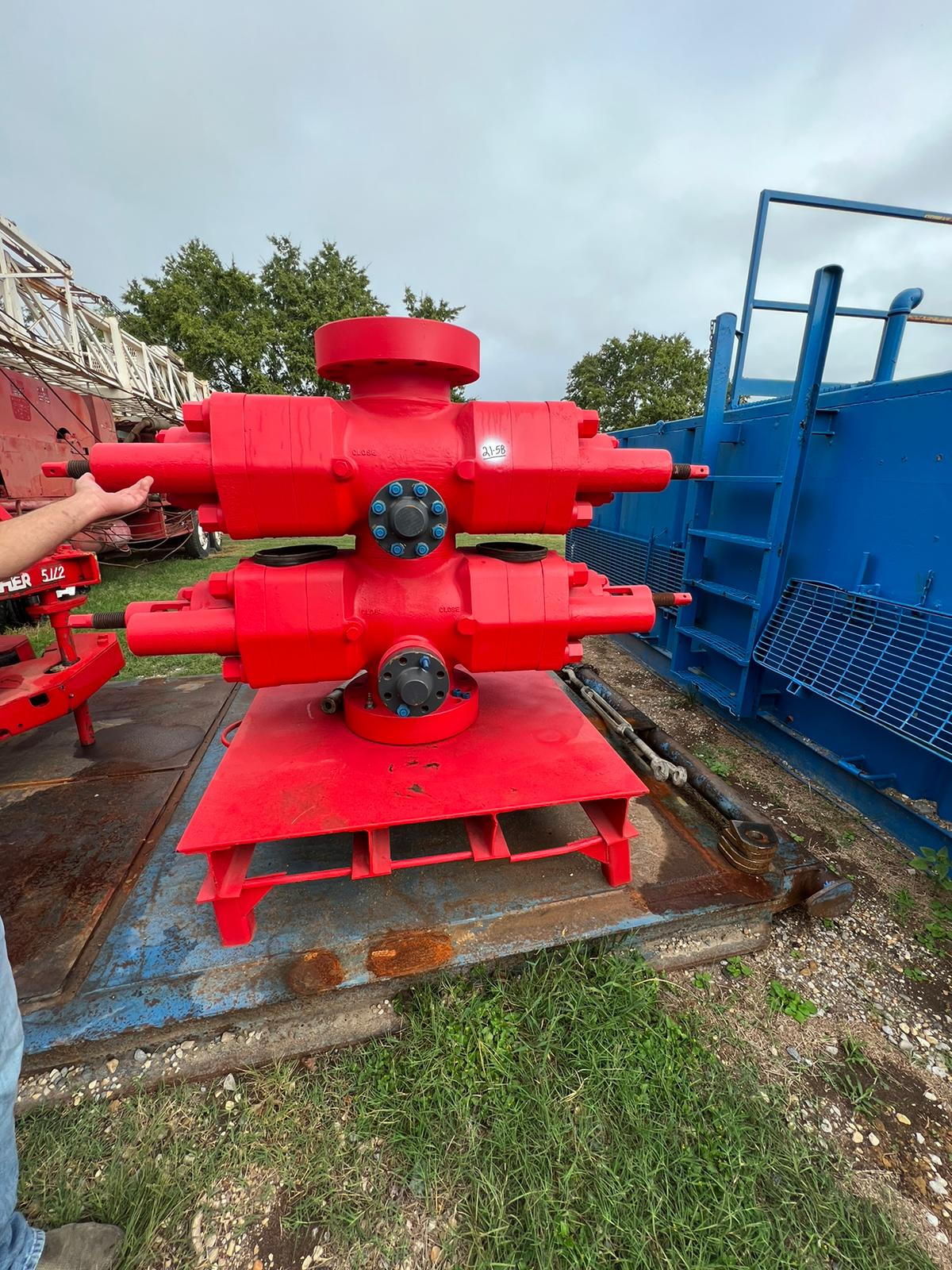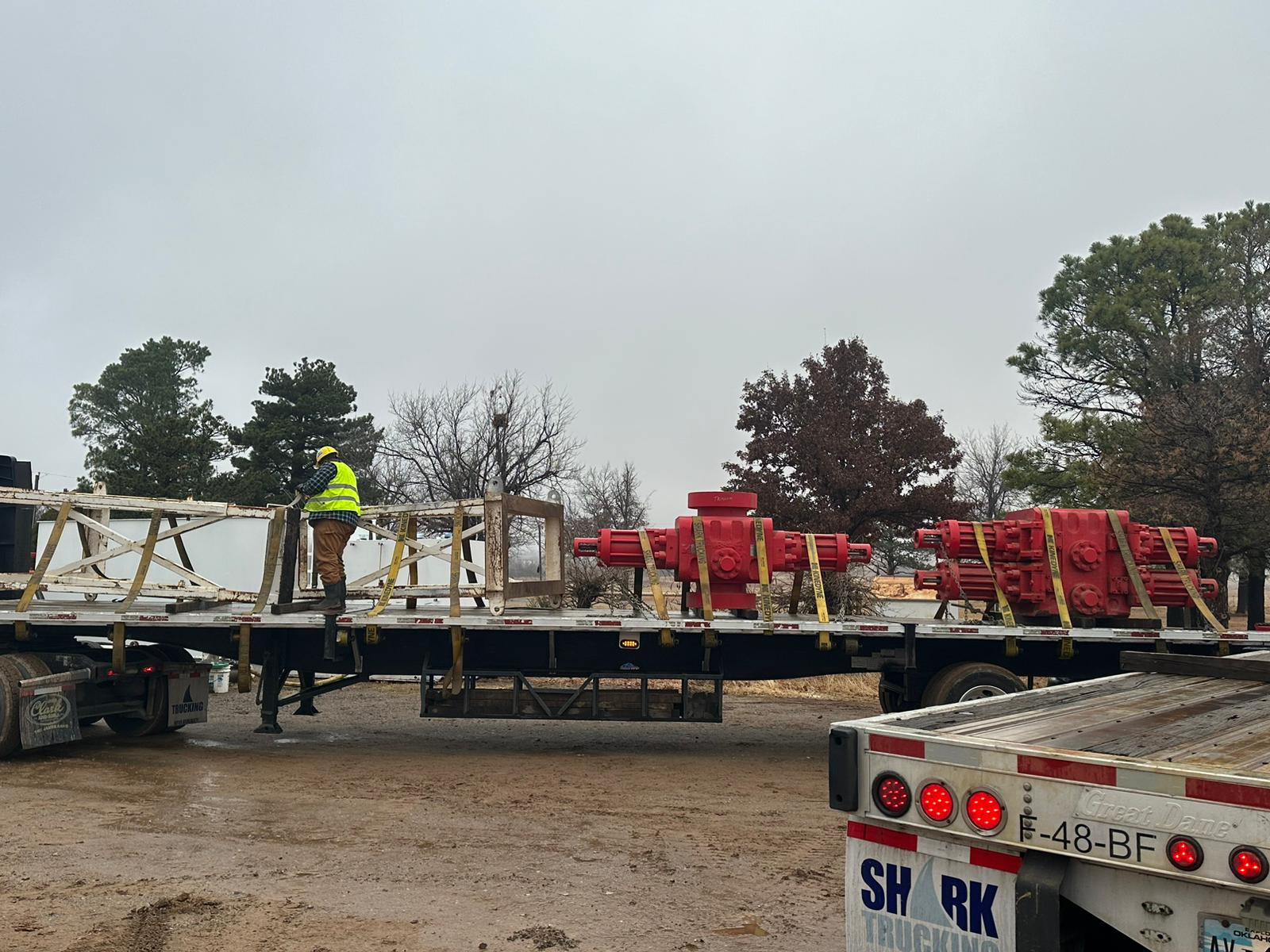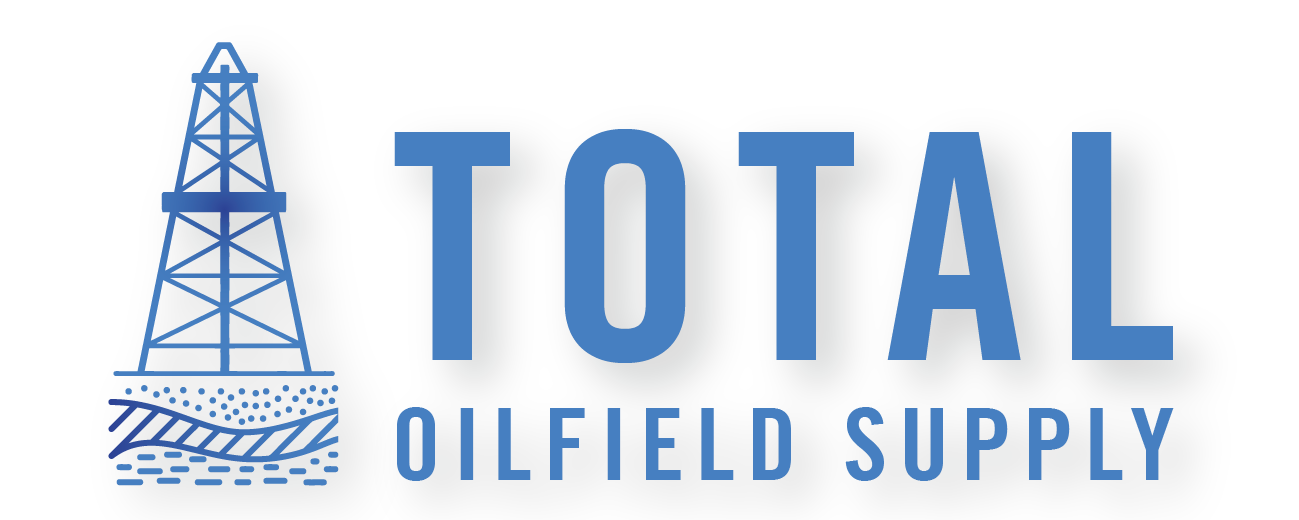What is an annular BOP unit? In the high-stakes arena of oil and gas drilling, the annular BOP, or Blowout Preventer, is a vital safety tool that seals around various drill equipment to prevent catastrophic blowouts. Its flexible rubber core adapts to seal effectively, vital for controlling well pressure. This article uncovers the inner workings, significance, and technological evolution of the annular BOP unit, critical to drilling operations worldwide.
Key Takeaways
An Annular Blowout Preventer (BOP) is a critical safety device in drilling operations designed to create a pressure-tight seal around the drill string, which prevents blowouts by controlling well pressure and ensuring operational integrity.
Annular BOPs come in various sizes and pressure ratings to suit different operational requirements, with material and manufacturing standards (such as API Standard 53) ensuring their reliability and safety in high-pressure and high-temperature conditions.
Regular maintenance, testing, and advancements in sealing technologies and smart control systems are integral to the performance and safety of annular BOPs, which must be selected carefully based on well properties, operational environments, and drilling conditions.
Exploring the Basics of an Annular BOP
The annular BOP, a pivotal player in the drilling landscape, functions as a seal around drill pipes or casing. This specialized mechanical device is integral to safety and control during drilling operations.

Definition and Functionality
An annular BOP, also known as the universal, multi-performance, or spherical blowout preventer, earns its name from its unique sealing element, the rubber core ring. This specialized mechanical device, called an annular blowout preventer, is fundamentally designed to create a pressure-tight seal around the drill string in oil and gas wells. This sealing capability allows for the control and monitoring necessary to maintain pressure integrity, thereby ensuring safe and efficient drilling operations and preventing annular blowout incidents.
The annular BOP is fundamental in preserving a solid seal on the well, which is a key factor in averting disastrous blow-outs during drilling operations. This is where the technology of the annular BOP comes into play. The annular BOP is not just a piece of machinery; it’s an essential service that operates to ensure the safety and efficiency of drilling operations.
Components and Mechanism
The intricate design of an annular BOP comprises several key components, including:
The large valve body
The upper housing
The sealing elements
The dust ring
The piston
The sealing element, or the packing unit, is typically made of rubber, giving it the adaptability to fit different pipe sizes and conform to irregular wellbore shapes.
The annular BOP demonstrates remarkable adaptability as it can encase drill pipes, drill collars, and a variety of tubing sizes. It can even completely close an open hole. These components work in concert to enable the annular BOP to effectively control well pressure during various drilling operations.
Via this complex mechanism, the annular BOP establishes itself as a key control system in drilling operations.
Importance in Well Control
The annular BOP commands respect in the oil drilling field due to its significant role as a well control device. It is highly valued for its critical role in maintaining safe and efficient operations. It prevents leaks or disasters and plays a central role in maintaining control over the well while drilling. Positioned on top of ram preventers, the annular BOP is part of the well control system and can be activated to control mud flow and stop the escape of fluids and gases, effectively highlighting its importance in well control.
Annular and ram-type BOPs are adjustable to different wellbore sizes and types, acting as primary barriers against wellbore pressure within the BOP control system. The selection of annular BOPs is influenced by the likelihood of encountering gas or oil, which increases the risk of blowouts. Therefore, they must perform effectively under maximum anticipated environmental and operational conditions.
The Technical Specifications of Annular BOPs
Annular BOP units are available in a range of sizes to accommodate diverse operational requirements. The bore diameters range from as small as 4.063 inches to as large as 30.000 inches, accommodating a wide spectrum of drilling operations.

Size and Pressure Ratings
The size and pressure ratings of BOPs are decisive elements contingent on the specific drilling environment and well attributes. A 7.063-inch vertical bore annular BOP can have a working pressure rating of up to 5 million pounds per square inch (5M psi) or even 10 million pounds per square inch (10M psi), depending on the model. Larger annular BOPs, like those with a 30.000-inch vertical bore, may have lower pressure ratings, around 1 million pounds per square inch (1M psi).
These impressive pressure ratings signify the annular BOP’s ability to withstand the higher pressures and temperatures found in deepwater and High-Pressure High-Temperature (HPHT) drilling operations. High-Pressure, High-Temperature (HPHT) annular BOPs are engineered for the most extreme downhole conditions, essential for maintaining well integrity. The weight differences in annular BOP units are quite pronounced; a 7.063-inch 5M psi BOP typically weighs about 3,175 pounds, whereas a larger, higher-rated 13.625-inch 10M psi BOP can weigh close to 32,475 pounds.
Material and Manufacturing Standards
Material and manufacturing standards for annular BOPs are rigorous, guaranteeing safety and reliability. They must meet the BOP requirements of API Standard 53, as well as additional requirements specified in regulatory standards such as 30 CFR Part 250 Subpart G. The design, fabrication, maintenance, and repair of annular BOP systems must adhere to Original Equipment Manufacturer’s recommendations, recognized engineering practices, and specific safety and environmental regulations.
Annular BOPs manufactured after certain regulatory dates must be produced in accordance with an ANSI/API Spec. Q1 quality management system, certified by an entity meeting ISO/IEC 17021–1 requirements. BSEE regulations may accept annular BOP equipment manufactured under alternative quality assurance programs if the operator submits the relevant information about the program.
New elastomers and sealing materials have been developed for annular BOPs, offering superior resistance to extreme temperatures, pressures, and corrosive drilling fluids. For offshore drilling environments, annular BOP materials must be durable enough to withstand high pressures, extreme cold, and saltwater corrosion.
Operating an Annular BOP: Procedures and Systems

The operation of an annular BOP entails a sequence of procedures and systems that guarantee its efficacy in sealing and managing wellbore pressure. Hydraulic systems are essential for annular BOP operation, as they provide the necessary force to close the BOP and seal the well.
Hydraulic Pressure and Control Systems
Hydraulic pressure from BOP accumulators is vital for the operation and testing of annular BOPs, enabling the BOP to open and close via hydraulic fluids. The maximum hydraulic pressure typically used for operating annular BOPs is around 1,500 psi, which affects the sealing process as high-pressure oil enters the lower closing chamber of the piston to push it upward. The accumulator system, incorporating elements such as the hydraulic reservoir, control manifold, control valves, and compressed gas bottles, is essential for managing hydraulic pressure in the BOP.
The BOP control system includes:
Hydraulic Power Unit (HPU), which supplies pressurized fluid
Control valves and manifolds, responsible for directing the fluid to the BOP stack
Control panels, PLCs, and communication devices, providing operators with real-time data and control capabilities
High-speed valves, advanced sensors, and control software, for greater precision and efficiency
These components work together to ensure the proper functioning of the BOP control system.
The integration of automation and remote monitoring technologies allows for remote tracking of BOP status, including pressure and temperature, which is a significant step towards enhancing safety and operational efficiency.
Activation and Sealing Processes
The activation and sealing processes are vital to the operation of an annular BOP. Annular BOPs are equipped with an elastomer sealant shaped like a large rubber donut, capable of flexing to create an effective seal around the wellbore with various casing or pipe sizes. The annular BOP is strategically positioned at the very top of the BOP stack, enabling an efficient airtight seal and providing access for well interventions.
Upon activation, the annular BOP closes off the annular space around the drill pipe, managing the flow and pressure of the drilling mud without disrupting other operations. This sealing process is a testament to the careful engineering and intricate design that goes into each annular BOP, showcasing the technological prowess employed in drilling operations.
Maintenance and Testing Protocols
Routine maintenance and testing are vital in guaranteeing the operational readiness of annular BOPs. They should be tested with water to ensure accurate results due to its lower compressibility compared to mud, alongside a testing procedure that includes circulating water through lines to verify their fullness. Low-pressure tests are typically performed using 200-300 psi for a 5-minute duration to ensure both annular and RAMs preventers are operating correctly.
The testing sequence encompasses a low and high-pressure test, recording pressure levels for a minimum of 5 minutes to check for stability. Regular BOP function tests are conducted weekly, using alternate remote panels, and full BOP tests are mandated prior to drilling, following repairs, and on a 14-21 day cycle based on local laws. During testing, it is crucial to keep the casing valve open and monitor the outlet to manage pressure levels within the casing, ensuring safety.
Ease of maintenance in annular BOPs is facilitated by their simpler design, including features like replaceable rubber packing units and bearings, which are essential for reducing downtime.
Annular BOPs Across Various Drilling Environments
The adaptability of annular BOPs is demonstrated in their use across diverse drilling environments, encompassing both onshore and offshore operations. They play an essential role in securing wellbore integrity and preventing an uncontrollable release of fluids in onshore drilling operations.
For offshore drilling environments, additional requirements are imposed due to increased operational complexity and potential environmental risks.
Onshore Drilling Applications
When it comes to onshore drilling operations, annular BOPs are indispensable for maintaining wellbore pressure by sealing around the drill pipe or casing, and they possess the capability to close the well even in the absence of any pipe. This functionality is vital to ensure the safety and efficiency of onshore drilling operations.
Onshore operations, despite their challenges, offer easier access for maintenance and repair of annular BOPs, making them a reliable choice for such environments. The annular BOPs’ versatility in accommodating different pipe sizes and their ability to close the well entirely makes them an invaluable asset in onshore drilling operations.
Offshore and Deepwater Challenges
Offshore and deepwater drilling environments pose extra challenges that necessitate superior capabilities from annular BOPs. When selecting an annular BOP for offshore drilling, it is crucial to consider factors like the drilling equipment size and geometry, synergy with the drilling rig, and the environmental challenges presented by seabed temperature and pressure. Annular BOPs can be customized with thermal insulation or cooling systems to maintain functionality in the diverse temperature ranges encountered in offshore drilling operations.
In offshore drilling, annular BOPs are positioned at the top of the BOP stack to ensure the most efficient seal around the drill pipe, a design choice crucial for maintaining control under the rigors of an ocean environment. Deepwater drilling requires BOP systems, including annular components, that can span significant heights, which reflects the complexity and extensive engineering necessary to operate effectively in deep-sea conditions.
Innovations and Technological Advancements in BOP Design

The domain of BOP design has seen numerous technological advancements that have elevated performance, reliability, and safety in drilling operations. These advancements have led to increased intervals between maintenance, consequently reducing non-productive time during drilling operations.
Cutting-edge Sealing Technologies
New sealing technologies have emerged in the realm of annular BOPs, including the development of high-performance elastomers, which enhance resistance to extreme temperatures and chemical degradation. The latest sealing materials have been engineered to maintain flexibility and sealing force under the immense pressures found in deepwater drilling scenarios.
Enhancements to sealing element geometry involve designing seals that can achieve a more effective and reliable pressure barrier around different pipe diameters. The sealing elements now feature adaptive geometries that conform better to irregularities, ensuring the integrity of the seal even in the event of pipe bending or movement.
Innovations in sealing system integration include the use of real-time monitoring systems to provide instant feedback on the effectiveness of the seal. Advanced sealing systems are being developed to automatically adjust to various operational parameters, optimizing the sealing performance throughout the drilling process.
Smart Control Equipment
Smart well control equipment has emerged as a game-changer in the operation of annular BOPs. New smart control systems for annular BOPs are equipped with high-speed valves, sophisticated sensors, and integrated control software, enhancing precision during operation.
These smart systems pave the way for greater efficiency and safety in drilling operations. They offer real-time data, enabling operators to make informed decisions quickly. The integration of smart control equipment in annular BOPs is a testament to the continuous innovation in the oil and gas industry, aiming to enhance performance while prioritizing safety.
Selecting the Right Annular BOP for Your Operations
Choosing the right annular BOP unit demands a meticulous assessment of the specific operational needs and well control requirements inherent to each drilling operation.
Factors to Consider
Choosing a suitable annular BOP necessitates consideration of well properties, including the specific drilling environment and the existing pressure and temperature conditions. For deeper wells where higher pressures are encountered, an annular BOP with higher pressure ratings is necessary to ensure safe and efficient operation.
Understanding the operational environment and the characteristics of the well is vital in choosing the right annular BOP. It’s about finding the perfect match between the demands of the drilling operation and the capabilities of the annular BOP. This careful selection process is crucial to ensure safety and efficiency in drilling operations.
Customization and Adaptability
Options for customization and adaptability meet the needs of specific operational requirements and drilling environments. Annular BOPs can be customized with control systems that are compatible with existing rig equipment, ensuring seamless integration and operation. High-Pressure, High-Temperature (HPHT) annular BOPs are designed for extreme conditions and are essential for maintaining well integrity in challenging downhole pressures and temperatures.
Annular BOPs can be customized in different sizes to fit specific operational requirements, with various aperture and bore sizes available. Different types of annular BOPs, such as:
Spherical
Compact
Hydraulic
Variable bore rams
Stripper annular BOPs
offer unique features that cater to specific drilling circumstances.
Summary
In conclusion, it’s clear that annular BOPs play a critical role in the safety and efficiency of drilling operations. Their unique design and functionality, coupled with advancements in technology, make them an indispensable asset in both onshore and offshore drilling environments. Choosing the right annular BOP requires a thorough understanding of the drilling environment and operational requirements. With the ongoing innovations in BOP design, we can look forward to even higher safety standards and efficiency in future drilling operations.
Frequently Asked Questions
What is the annular space in an oil well?
The annular space in an oil well is a ring-shaped space outside the drillpipe, through which mud and cuttings are removed. It is the space between the drillpipe and the borehole, allowing the removal of drilling fluid containing cuttings.
What is the operating pressure of the annular BOP?
The operating pressure of the annular BOP is 1500 psi, making it suitable for effective well pressure control and sealing.
What is the difference between a pipe ram and an annular BOP?
The difference between a pipe ram and an annular BOP lies in their sealing mechanisms. An annular BOP uses a flexible rubber element to seal around the pipe, accommodating variations in pipe size, while a ram BOP uses rigid steel plates to provide a more fixed seal.
What are the technological advancements in BOP design?
Technological advancements in BOP design include high-performance elastomers for sealing, smart control systems, and real-time monitoring systems. These advancements aim to improve safety and efficiency in offshore drilling operations.
